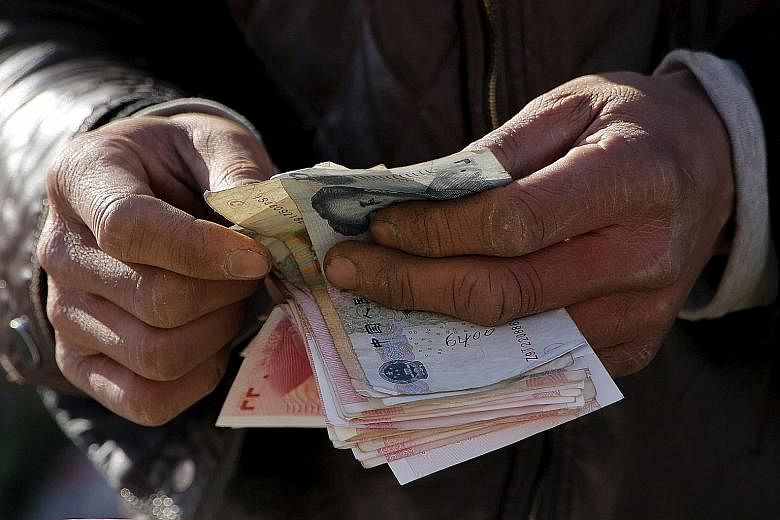HONG KONG • Rising debt levels will worsen the credit profiles of China's top 200 companies this year, requiring the country's banks to raise US$1.7 trillion (S$2.3 trillion) in capital to cover a likely surge in bad loans, S&P Global said in a report published yesterday.
The study sees little scope for improvement next year, amid worsening leverage and substantial excess capacity in almost all sectors. Seventy per cent of the firms surveyed were state-owned, comprising 90 per cent of the sample firms' debt.
The rating agency estimated that the problem credit ratio at Chinese banks was 5.6 per cent at the end of last year. In a downside scenario of unabated credit growth, that ratio could worsen to 11 per cent to 17 per cent.
In such a situation, banks would need as much as US$1.7 trillion in recapitalisation funds by 2020. Even under a base case scenario, they would require US$500 billion.
S&P Global expects China's government to continue to allow rapid credit growth over the next 12 to 18 months before attempting to rein it in, implying that risks would heighten in one to two years.
Debt has emerged as one of China's biggest challenges, with the country's total debt load rising to 250 per cent of gross domestic product (GDP). Excessive credit growth in China is signalling an increasing risk of a banking crisis in the next three years, the Bank for International Settlements warned recently.
The International Monetary Fund has warned China that its credit growth is unsustainable, with corporate borrowers sitting on US$18 trillion in debt, equivalent to about 169 per cent of GDP.
But Premier Li Keqiang has said China's debt risks are generally controllable, in remarks made before a conference in Macau yesterday.
The country's overall leverage ratio is not high, Mr Li said a day after policymakers signalled that they are stepping up their fight against excessive borrowing.
The State Council, China's Cabinet, issued new guidelines on Monday for reducing corporate debt and said the government will not bear the final responsibility for borrowing by companies. The measures include encouraging mergers and acquisitions, bankruptcies, debt-to-equity swaps and debt securitisation to improve credit allocation and stop wasteful spending in the economy.
Financial regulators also plan to further tighten control on funds flowing into the property market in violation of current rules, according to people familiar with the matter.
However, S&P Global's report said further deterioration in the credit strength of state-owned enterprises (SOEs) is expected as they continue with their debt-funded expansion.
But privately owned companies in China were turning around as cost controls and reductions in capital expenditure had eased pressure on their cash flows, S&P Global's report said, highlighting the contrast in performance versus SOEs.
As a result, SOEs' median leverage, at about six times as of the end of last year, was about twice the level for private-sector entities. "The divergence in credit risks between SOEs and private-sector firms will therefore continue to increase," the report said.
REUTERS, BLOOMBERG

